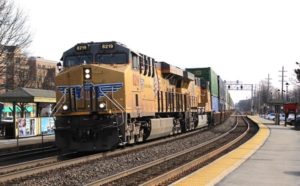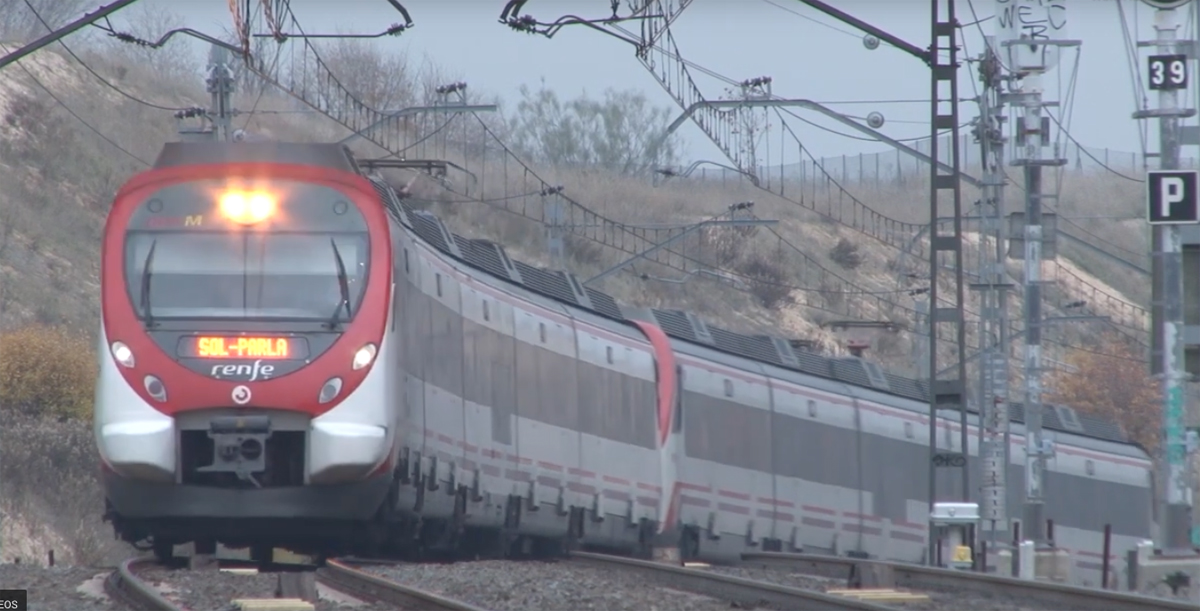
TRAINS: David Lassen
OMAHA, Neb. — Union Pacific expects volume to increase by 4% to 6% this year as vaccines are rolled out, the economy recovers, and trucking capacity remains tight.
Railroad executives gave their cautiously optimistic outlook Thursday morning during the company’s fourth-quarter earnings call.
Other than energy-related traffic segments, UP has a positive view on volume. A continued decline in coal traffic is expected to be a 1% hit on the railroad’s overall volume in 2021. Premium traffic, which includes intermodal and automotive volume, should benefit from higher auto sales, retail inventory restocking, and strong consumer demand. A recovery in industrial production should boost key merchandise traffic segments, and strong grain exports to China and rising biofuels production should boost the railroad’s bulk traffic.
The forecast is a turnaround from 2020, when the economic impact of the pandemic upended rail traffic. For the year, UP’s volume declined 7%, with every traffic category down with the exception of grain and fertilizer shipments. UP’s operating income declined 8%, to $7.83 billion, as revenue declined 10%, to $18.3 billion. Earnings per share declined 6%, to $7.90.
The operating ratio was 59.9% for 2020, or a record 58.5% when adjusted for the impact of one-time items. That’s a 2.1-point improvement over 2019. UP expects continued improvement in its operating ratio this year as it moves toward its long-term target of 55%, Chief Financial Officer Jennifer Hamann says.
For the fourth quarter, UP’s volume was up 3% compared to a year ago. Premium volume grew 9%. Bulk volume, which includes grain, fertilizer, coal, food and refrigerated shipments, was flat. Industrial shipments, which include carload commodities such as chemicals and plastics, metals and minerals, forest products, and energy, declined 6%.
Quarterly operating income declined 4%, to $2 billion, as freight revenue declined 1%, to $4.8 billion. Earnings per share grew 1%, to $2.05.
UP’s 2021 capital budget is $2.9 billion, up 2% from 2020. To support longer trains, the railroad will build or extend 20 passing sidings this year, mostly in its Southern Region and in the Pacific Northwest. UP also will continue its locomotive modernization program this year.
To support longer trains, UP completed 36 15,000-foot sidings in 2020. Average train length has grown 30%, or 2,100 feet, since UP shifted to a Precision Scheduled Railroading operating model in late 2018.
The focus on longer trains will continue, including combining different types of traffic when possible, says Eric Gehringer, executive vice president of operations.
All of Union Pacific’s key operating metrics improved for the year. Trip plan compliance was up six points for both intermodal and merchandise. Freight car velocity was up 6%, terminal dwell declined 8%, and train length and locomotive productivity were both up 14%.
The improved service should help UP capture business from trucks, CEO Lance Fritz told investors and analysts on the railroad’s earnings call.
Fritz says that UP is pleased with its progress improving on-time performance but is not satisfied with 83% trip-plan compliance for intermodal or the 74% compliance for merchandise and automotive carloads in the fourth quarter.
Ultimately, UP aims to get its trip-plan compliance figures to around 90% for intermodal and into the low 80% range for merchandise and automotive. “That’s a sweet spot balancing out resources and fulfilling a consistent, reliable service product that supports the needs of our customers,” Fritz says.













